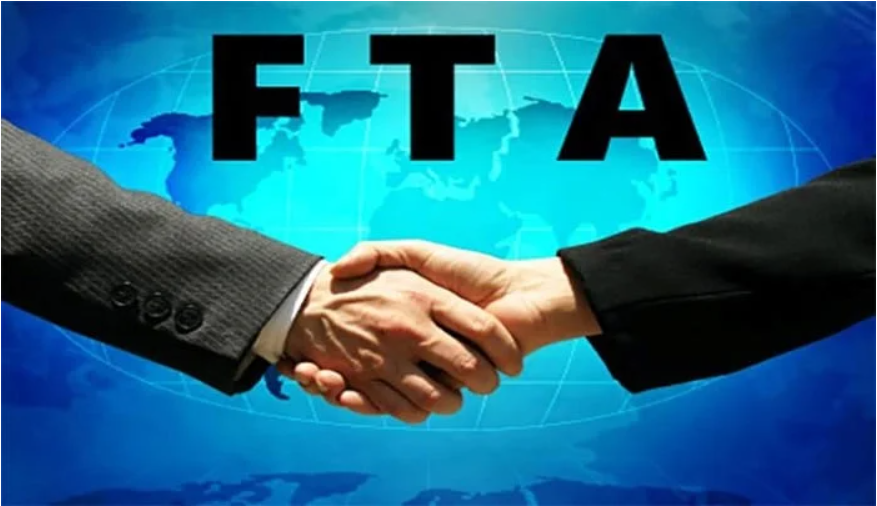
1. Main Objectives of an FTA
The objectives of FTAs generally focus on:
Promoting Cross-Border Trade: By lowering or removing tariffs and non-tariff barriers, FTAs make it more attractive for businesses to export and import products.
Enhancing Investment Flows: By simplifying regulations, FTAs attract foreign direct investment (FDI), allowing businesses to expand and create jobs.
Strengthening Economic Ties: FTAs encourage economic interdependence, improving political relations and stability between countries.
2. Key Components of FTAs
FTAs typically include several components that define how trade and investment will occur between member countries:
Tariff Elimination: FTAs outline schedules for reducing or completely eliminating tariffs on products traded between member countries, usually over a phased timeline.
Non-Tariff Barrier Reduction: Beyond tariffs, FTAs also reduce non-tariff barriers like quotas, import licenses, and complicated customs procedures, streamlining the trade process.
Rules of Origin (ROO): To prevent third-party countries from benefiting unfairly, FTAs specify that goods must meet certain origin requirements to qualify for tariff benefits. For example, a product must contain a specified percentage of materials from member countries.
Investment Provisions: FTAs typically encourage member countries to allow foreign businesses to operate under fair and transparent regulations, fostering a stable investment environment.
Intellectual Property Rights (IPR): Intellectual property protection is a key feature of modern FTAs, safeguarding copyrights, patents, and trademarks across borders to protect innovations and creativity.
Service Sector Access: FTAs often expand access to service industries like finance, telecommunications, and education, which are increasingly important in global economies.
Labor and Environmental Standards: Many FTAs include commitments to uphold fair labor practices and environmental protections, reflecting a global focus on sustainable development.
3. Benefits of Free Trade Agreements
FTAs can deliver a range of advantages, enhancing economic performance for all member countries:
Market Access and Export Growth: By reducing tariffs and non-tariff barriers, FTAs create new export opportunities, allowing businesses to access foreign markets more easily.
Consumer Savings: With lower tariffs, the cost of imported goods often decreases, resulting in savings for consumers and enhancing their purchasing power.
Enhanced Competitiveness: Exposure to global competition encourages domestic industries to innovate, improve product quality, and adopt efficient production practices.
Foreign Investment: Countries with FTAs become more attractive to investors, encouraging capital inflows that can lead to job creation and technology transfer.
Economic Growth and Job Creation: FTAs often result in increased trade volumes and investment, which can stimulate GDP growth and create jobs in participating countries.
Increased Product Variety: FTAs allow consumers access to a broader range of products from around the world, often at lower prices due to reduced trade barriers.
4. Potential Challenges of Free Trade Agreements
While FTAs bring significant benefits, they also pose challenges, including:
Increased Competition for Domestic Industries: Domestic industries, especially smaller or less competitive ones, may struggle to compete with cheaper imports, leading to potential job losses.
Loss of Government Revenue: Reductions in tariffs lead to a decrease in government revenue from imports, which can impact funding for public services unless other sources are found.
Compliance Costs: Meeting the regulatory and legal requirements of FTAs, such as rules of origin or environmental standards, can impose additional costs on businesses.
Environmental and Labor Concerns: FTAs sometimes lack robust enforcement of environmental protections or labor standards, which can lead to exploitation or environmental degradation in some regions.
Complex Rules of Origin: The ROO requirements can be complex and expensive for businesses to comply with, especially for small and medium-sized enterprises (SMEs).
5. Types of FTAs
FTAs come in different forms, ranging from agreements focused only on goods to comprehensive pacts that cover services, investments, intellectual property, and beyond:
Goods-Only FTAs: These agreements focus on the reduction or elimination of tariffs on goods, without addressing services or investment.
Comprehensive FTAs: These include provisions for goods, services, investments, and intellectual property protection, and may also address labor and environmental standards.
Customs Unions: In addition to tariff reduction, a customs union involves members agreeing to a common external tariff on imports from non-member countries.
6. Examples of Notable FTAs
Here are some major examples of FTAs, each with distinct features and member countries:
United States-Mexico-Canada Agreement (USMCA): This agreement, which replaced NAFTA, promotes trade in North America by reducing barriers across a range of goods and services and improving labor standards.
European Union Free Trade Agreements: The EU has numerous FTAs worldwide, such as with Japan and South Korea, designed to boost trade by eliminating most tariffs and harmonizing regulations.
Comprehensive and Progressive Agreement for Trans-Pacific Partnership (CPTPP): This FTA includes 11 Asia-Pacific countries, focusing on a broad array of issues, from goods and services to intellectual property and labor standards.
EU-Vietnam Free Trade Agreement (EVFTA): A recent FTA that eliminates most tariffs between the EU and Vietnam, while also covering sustainable development, intellectual property, and regulatory cooperation.
7. Future Trends in FTAs
As global trade evolves, FTAs are adapting to cover a broader scope, addressing emerging issues like:
Digital Trade: Modern FTAs increasingly cover digital trade, providing guidelines on e-commerce, data privacy, and cross-border data flows.
Sustainability: FTAs are gradually incorporating stronger environmental and labor standards, addressing global concerns about sustainability and fair labor practices.
Resilience in Supply Chains: FTAs now include measures to safeguard supply chains, aiming to prevent disruptions like those seen during the COVID-19 pandemic.
Conclusion
Free Trade Agreements play a crucial role in today’s globalized economy, connecting markets and enabling cross-border cooperation. While they offer many advantages, including enhanced market access, consumer benefits, and economic growth, FTAs also require careful planning and adaptation to address challenges. As FTAs continue to evolve, they reflect the dynamic needs of modern trade and the commitment of nations to foster an interconnected, resilient, and sustainable global economy.